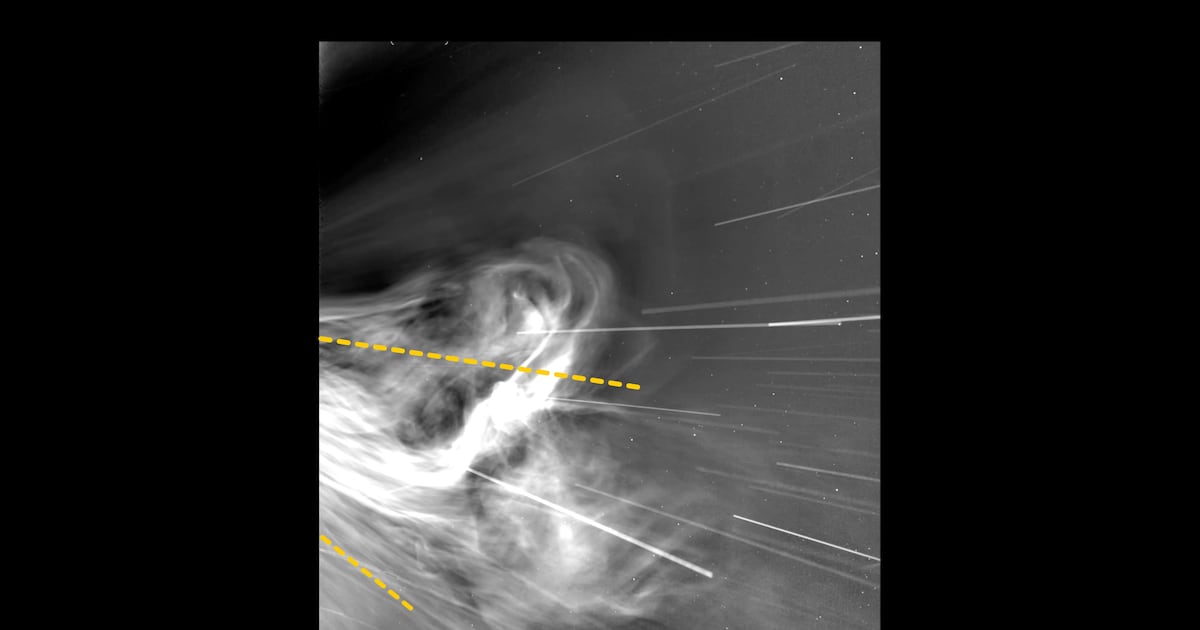In the early morning hours of Aug. 12, 2018, Cape Canaveral Air Force Station was abuzz as NASA prepared for a historic launch. The Parker Solar Probe , roughly the size of a small car, was set to embark on a mission to “touch” the sun. Its goal was to travel into the sun’s atmosphere, about 4 million miles from its fiery surface.
Described as a mission poised to “revolutionize our understanding of the Sun,” the solar probe was equipped to investigate how changing solar conditions can ripple through the solar system, affecting Earth and beyond. Built to withstand the sun’s brutal heat and radiation conditions, for the mission that would become a scientific breakthrough.
Since its launch in 2018, the probe has been steadily closing in on Earth’s closest star, capturing images along the way that have helped NASA scientists uncover the sun’s atmospheric mysteries.
On Dec. 24, 2024, it achieved a record-breaking approach nearing, “just 3.8 million miles from the solar surface.” To put this into perspective, if the earth and the sun were just one foot apart, the probe would be a mere half-inch from the sun, according to NASA.
Recently, NASA released images captured during the flyby, offering the closest views of the sun ever recorded. And they are amazing.
Scientists have released the closest images ever taken near the sun, captured by NASA’s Parker Solar Probe flying 3.8 million miles above the solar surface.
See more images of solar eruptions on the sun: https://t.co/k6WdI1gdUQ pic.twitter.com/RQkrZHbvgQ
— The Washington Post (@washingtonpost) July 15, 2025
What has secrets has Parker unveiled?
Nicky Fox, associate administrator for the Science Mission Directorate at NASA Headquarters in Washington, praised the images that Parker collected saying, “Parker Solar Probe has once again transported us into the dynamic atmosphere of our closest star,” she continued, “we are witnessing where space weather threats to Earth begin, with our eyes, not just with models.”
The latest images show details about solar wind that have shifted scientists perceptions and how they will approach space weather predictions.
Fox went on to highlight that the insights gained will refine space weather predictions, significantly impacting the safety of astronauts and safeguarding NASA technology across the solar system.
Solar wind and why it matters?
Solar wind, despite it’s name, is not air at all, but is a constant flow of small electrically charge particles that are released from the sun’s atmosphere. These particles “rage across the solar system at speeds exceeding 1 million miles an hour,” according to NASA.
Before Parker blasted into space, observations suggested that there were two types of solar wind, a slow solar wind, called “Alfvénic, has small-scale switchbacks. The second type, called non-Alfvénic, doesn’t show these variations in its magnetic field,” per details from NASA.
Parker confirmed this theory and its close-up views are also helping scientists determine the different unique origins of the two types of solar wind. Uncovering these different starting points could reveal how solar wind is really released and gains speed.
NASA underscored, “these newly released images — taken closer to the sun than we’ve ever been before — are helping scientists better understand the sun’s influence across the solar system, including events that can affect Earth.”
Parker’s future
While these stunning images have advanced our understanding of the Sun’s winds, Adam Szabo, a Parker Solar Probe mission scientist, remarked, “we don’t have a final consensus yet, but we have a whole lot of new intriguing data.”
NASA has said the Parker Solar Probe will continue to gather data in its future passes to provide further detail on the slow solar wind’s origins.
The next pass the probe will make will be on Sept. 15.

